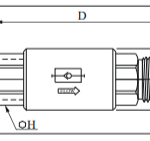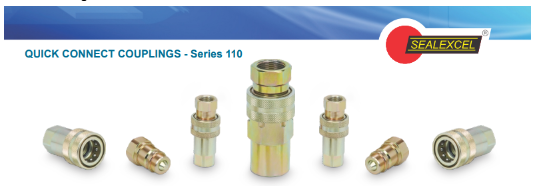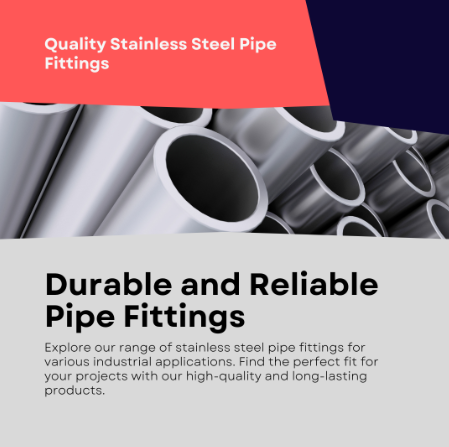
Unlock Control Valve Types: Explained in Detail
April 13, 2024
SS Pipe Fittings Catalogue: Find Your Perfect Fit
May 18, 2024The unsung heroes of a smooth-running plumbing system, Coupling Plumbing might seem small, but their role is crucial. These fittings act as the connectors, joining pipes of the same or different materials to create a continuous water flow path. Mastering the different types of couplings and their applications empowers you to tackle plumbing projects with confidence, be it a simple faucet replacement or a more complex pipe repair.
Why Are Coupling Plumbing Important?
Imagine your plumbing system as a network of roads. Pipes function as the highways, carrying water throughout your house. Coupling Plumbing are the bridges and intersections that connect these highways, ensuring a seamless flow of traffic – or in this case, water. Without proper couplings, leaks become inevitable, leading to water damage, wasted resources, and a hefty repair bill.
There are several advantages to using couplings:
- Versatility: Couplings come in various materials and sizes, allowing you to connect pipes of different diameters and even different materials like copper and PEX.
- Leak Prevention: Secure couplings with proper installation minimize the risk of leaks, ensuring a reliable and efficient plumbing system.
- Easy Maintenance: Some couplings, like compression couplings, offer easy disassembly for repairs or modifications to the plumbing system.
- Cost-Effectiveness: Compared to extensive pipe replacements, using couplings for repairs is a more cost-effective solution.
Types of Coupling Plumbing
The world of coupling plumbing is vast, each type designed for specific applications and materials. Let’s delve into some of the most common ones you’ll encounter:
- Compression Couplings: Often used with copper pipes, these couplings feature a nut, ferrule (olive), and compression ring. Tightening the nut compresses the olive against the pipe, creating a watertight seal.
- Sweat Couplings: These permanent couplings for copper pipes require soldering. The pipe ends are inserted into the coupling, and solder is melted to create a strong, leak-proof connection.
- PEX Couplings: Designed for PEX tubing, these couplings come in various forms like crimp, expansion, and push-fit. Each type requires a specific tool for secure installation.
- Sharkbite Couplings: A popular choice for DIYers, these innovative couplings feature a grabbing mechanism that secures PEX tubing with a simple push.
- Union Couplings: These versatile couplings allow for easy disconnection of pipes for maintenance or repairs. They consist of three threaded parts that come apart when loosened.
- Flange Couplings: Primarily used for larger diameter pipes, these couplings feature raised faces with bolt holes that allow for a secure connection with gaskets for added leak prevention.
Choosing the Right Coupling
Selecting the appropriate coupling hinges on several factors:
- Pipe Material: Different couplings are designed for specific materials like copper, PEX, PVC, or CPVC. Using the wrong coupling will compromise the connection and lead to leaks.
- Pipe Size: Couplings come in various sizes to match the diameter of your pipes. Mismatched sizes will result in a loose connection or difficulty inserting the pipe.
- Application: Consider the pressure and temperature the coupling will encounter. Some couplings, like sweat couplings, are ideal for high-pressure applications, while others might be better suited for cold water lines.
- Personal Preference: While some couplings require specialized tools, others like Sharkbite couplings offer a user-friendly push-fit design. Choose based on your comfort level and project needs.
Pro Tip: Always consult a professional plumber if you’re unsure about the type of coupling needed for your specific project. Their expertise can save you time, frustration, and potential leaks.
Installing Coupling Plumbing
The installation process for couplings varies depending on the type. However, here’s a general guideline:
- Turn off the water supply: Safety first! Locate the shut-off valve for the specific section of the pipe you’re working on and turn it off completely.
- Cut the pipe: Use a pipe cutter to ensure a clean, straight cut for a secure fit.
- Prepare the pipe ends: Depending on the coupling type, this might involve deburring (removing sharp edges) or inserting an insert ring (for PEX).
- Assemble the coupling: Follow the specific instructions for your chosen coupling. This might involve tightening a nut, inserting the pipe and using a crimping tool (PEX), or simply pushing the pipe in (Sharkbite).
- Turn on the water supply: Slowly reopen the shut-off valve and check for leaks at the connection point. Tighten any loose connections if necessary.
Remember: When working with plumbing, always prioritize safety. If you’re not comfortable with a specific task, don’t hesitate to call a professional plumber.
Maintaining Coupling Plumbing
While couplings are built to last, proper maintenance extends their lifespan and prevents leaks. Here are some tips:
- Regular Inspections: Visually inspect your plumbing system periodically, paying close attention to coupling points for signs of wear, corrosion, or leaks. A minor leak might easily grow into a significant issue.
- Tightening Connections: Over time, some couplings, like compression couplings, might develop slight leaks due to loose connections. Use an appropriate wrench to tighten them slightly, but be cautious not to over-tighten and damage the coupling.
- Protecting from Elements: Expose your plumbing to extreme temperatures whenever possible. Freezing temperatures can cause pipes and couplings to crack, while excessive heat can damage the materials. Consider insulating exposed pipes in cold climates.
- Addressing Issues Promptly: Don’t ignore even minor leaks. A small leak can worsen over time, causing significant water damage. Address any leaks promptly by tightening the coupling or replacing it if necessary.
DIY vs. Professional Help
For simple tasks like replacing a faucet or repairing a short section of pipe, using couplings can be a DIY project with proper research and the right tools. However, for more complex repairs involving extensive pipe replacement, working with high-pressure lines, or dealing with hidden leaks, seeking a professional plumber is highly recommended.
Here are some situations where a professional is the best course of action:
- Extensive plumbing knowledge required: If the project involves complex pipe layouts or troubleshooting hidden leaks, a plumber’s expertise can save you time and frustration.
- Working with high-pressure lines or hazardous materials: High-pressure lines require specialized tools and techniques. Similarly, working with gas lines or other hazardous materials should be left to licensed professionals.
- Peace of mind: Hiring a plumber provides peace of mind knowing the job is done correctly and up to code. They can also offer valuable advice on future coupling plumbing maintenance.
Conclusion
Couplings are the unsung heroes of a well-functioning plumbing system. Understanding their types, applications, and proper installation empowers you to tackle many DIY plumbing projects with confidence. However, don’t be afraid to call in a professional when the task gets complex or your comfort level wanes. Remember, a proactive approach to maintaining your coupling plumbing goes a long way in preventing leaks and ensuring a smooth flow of water in your home.





